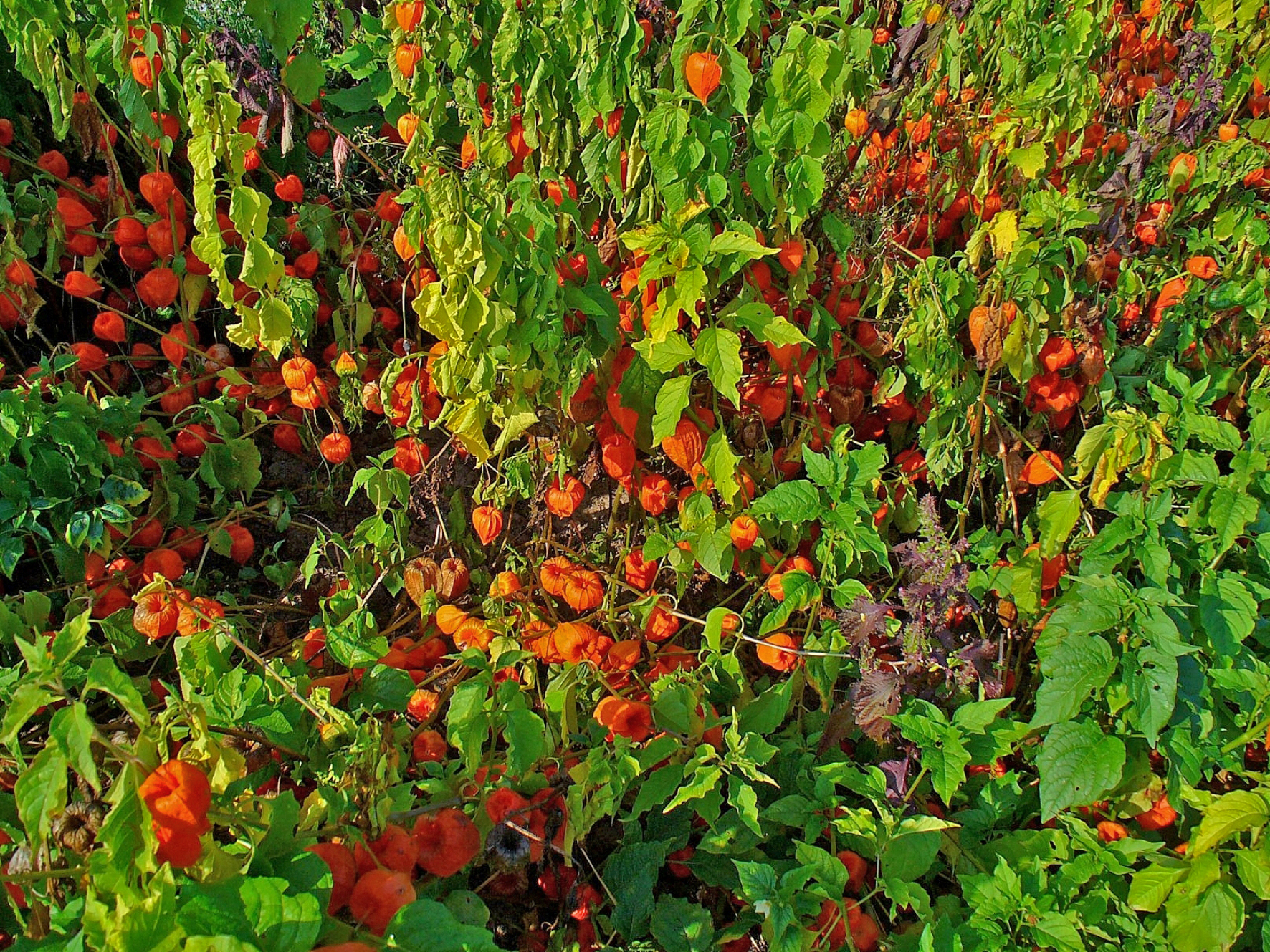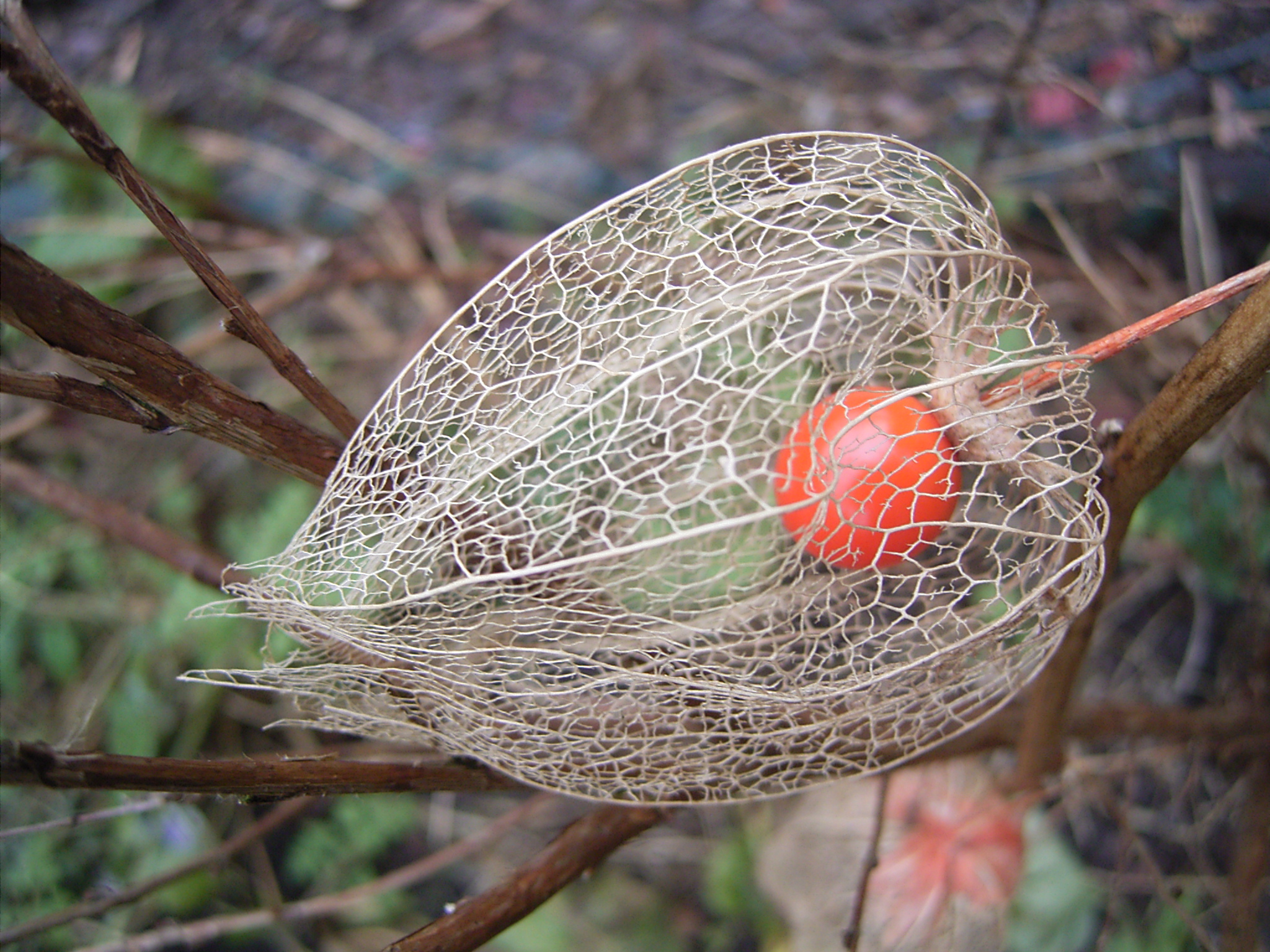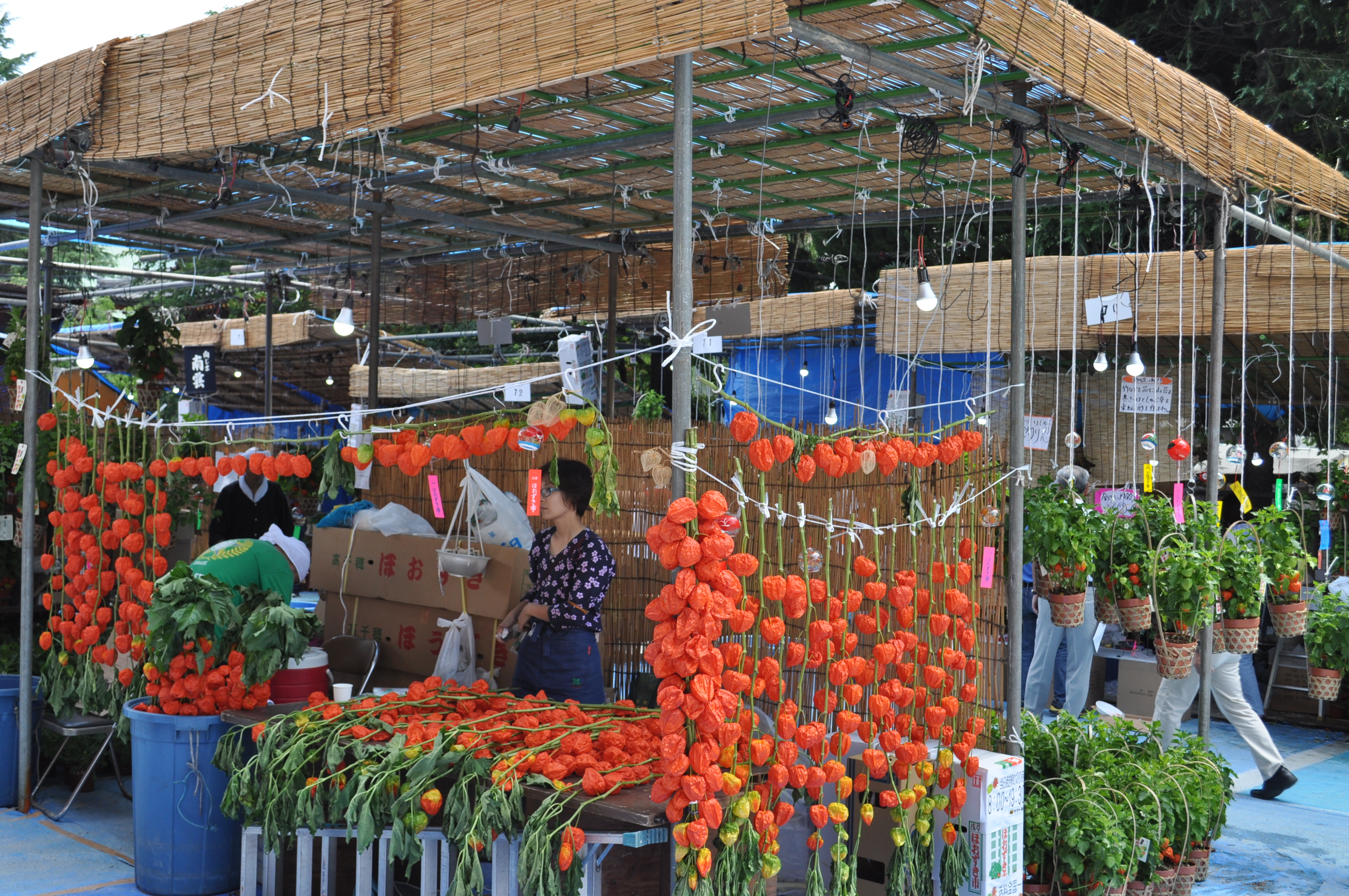Alkekengi Officinarum on:
[Wikipedia]
[Google]
[Amazon]
''Alkekengi officinarum'', the bladder cherry, Chinese lantern, Japanese-lantern, strawberry groundcherry, or winter cherry, is a species of flowering plant in the nightshade family Solanaceae. It is a close relative of the new world ''

 It is a popular ornamental plant, widely cultivated in temperate regions of the world, and very hardy to below . It can be
It is a popular ornamental plant, widely cultivated in temperate regions of the world, and very hardy to below . It can be
 In Japan, its bright and lantern-like fruiting calyces form a traditional part of the Bon Festival as offerings intended to help guide the souls of the dead. A market devoted to it – ''hōzuki-ichi'' – is held every year on 9–10 July near the ancient Buddhist temple of Sensō-ji in Asakusa.
In Japan, its bright and lantern-like fruiting calyces form a traditional part of the Bon Festival as offerings intended to help guide the souls of the dead. A market devoted to it – ''hōzuki-ichi'' – is held every year on 9–10 July near the ancient Buddhist temple of Sensō-ji in Asakusa.
Calliphysalis carpenteri
''Calliphysalis carpenteri'', or Carpenter's groundcherry, is a perennial plant in the Family (biology), family Solanaceae, the "nightshade" plants.Per Axel Rydberg. 1896. The North American species of ''Physalis'' and related genera. ''Memoirs o ...
'' (Carpenter's groundcherry) and a somewhat more distant relative to the members of the '' Physalis'' genus. This species is native to the regions covering Southern Europe to South Asia and Northeast Asia.
Description
It is easily identifiable by the large, bright orange to red papery covering over its fruit, which resembles paper lanterns. It is a perennial herbaceous plant growing to 40–60 cm tall, with spirally arrangedleaves
A leaf (plural, : leaves) is any of the principal appendages of a vascular plant plant stem, stem, usually borne laterally aboveground and specialized for photosynthesis. Leaves are collectively called foliage, as in "autumn foliage", wh ...
6–12 cm long and 4–9 cm broad. The flowers are white, with a five-lobed corolla 10–15 mm across, with an inflated basal calyx which matures into the papery orange fruit covering, 4–5 cm long and broad. And it has one variety, ''Alkekengi officinarum'' var. ''franchetii''.
Research has shown ''Calliphysalis carpenteri
''Calliphysalis carpenteri'', or Carpenter's groundcherry, is a perennial plant in the Family (biology), family Solanaceae, the "nightshade" plants.Per Axel Rydberg. 1896. The North American species of ''Physalis'' and related genera. ''Memoirs o ...
'' (formerly classified as ''Physalis carpenteri'') to be among the most closely related species to ''Physalis alkekengi''.
Cultivation
invasive
Invasive may refer to:
*Invasive (medical) procedure
*Invasive species
*Invasive observation, especially in reference to surveillance
*Invasively progressive spread of disease from one organ in the body to another, especially in reference to cancer ...
with its wide-spreading root system sending up new shoots some distance from where it was originally planted. In various places around the world, it has escaped from cultivation.
In the United Kingdom it has been given the Royal Horticultural Society's Award of Garden Merit
The Award of Garden Merit (AGM) is a long-established annual award for plants by the British Royal Horticultural Society (RHS). It is based on assessment of the plants' performance under UK growing conditions.
History
The Award of Garden Merit ...
.
Traditional uses
The dried fruit is called the golden flower in the Unani system of medicine, and used as a diuretic, antiseptic, liver corrective, and sedative. In Chinese medicine, ''Alkekengi'' is used to treat such conditions as abscesses, coughs, fevers, and sore throat. Theextinct
Extinction is the termination of a kind of organism or of a group of kinds (taxon), usually a species. The moment of extinction is generally considered to be the death of the last individual of the species, although the capacity to breed and ...
Dacian language has left few traces, but in ''De Materia Medica'' by Pedanius Dioscorides, a plant called ''Strychnos alikakabos'' (Στρύχνος άλικακάβος) is discussed, which was called ''kykolis'' (or ''cycolis'') by the Dacians. Some have considered this plant to be ''Alkekengi officinarum'', but the name more likely refers to ashwagandha (''Withania somnifera'').
Chemical constituents
''Alkekengi officinarum'' contains a wide variety of physalins. When isolated from the plant, these have antibacterial and leishmanicidal activities '' in vitro''. It also containscaffeic acid ethyl ester
Ethyl caffeate is an ester of a hydroxycinnamic acid, a naturally occurring organic compound.
Natural occurrences
It can be found in '' Bidens pilosa'', in ''Polygonum amplexicaule var. sinense''.
It is also found in Huáng bǎi, one of the ...
, 25,27-dehydro-physalin L, physalin D, and
cuneataside E.
Cultural significance
 In Japan, its bright and lantern-like fruiting calyces form a traditional part of the Bon Festival as offerings intended to help guide the souls of the dead. A market devoted to it – ''hōzuki-ichi'' – is held every year on 9–10 July near the ancient Buddhist temple of Sensō-ji in Asakusa.
In Japan, its bright and lantern-like fruiting calyces form a traditional part of the Bon Festival as offerings intended to help guide the souls of the dead. A market devoted to it – ''hōzuki-ichi'' – is held every year on 9–10 July near the ancient Buddhist temple of Sensō-ji in Asakusa.
Fossil record
''Alkekengi'' seed fossils are known from Miocene of Siberia, Pliocene of Europe and Pleistocene of Germany. Pollen grains of ''Alkekengi officinarum'' have been found in early Pleistocene sediments in Ludham east of Wroxham,East Anglia
East Anglia is an area in the East of England, often defined as including the counties of Norfolk, Suffolk and Cambridgeshire. The name derives from the Anglo-Saxon kingdom of the East Angles, a people whose name originated in Anglia, in ...
.
Taxonomic history
''Alkekengi officinarum'' was previously included in the genus '' Physalis'' until molecular and genetic evidence placed it as the type species of a new genus.References
External links
{{Use dmy dates, date=November 2018 Garden plants Medicinal plants Flora of Europe Flora of Asia Plants described in 1753 Poisonous plants Physaleae Monotypic Solanaceae genera